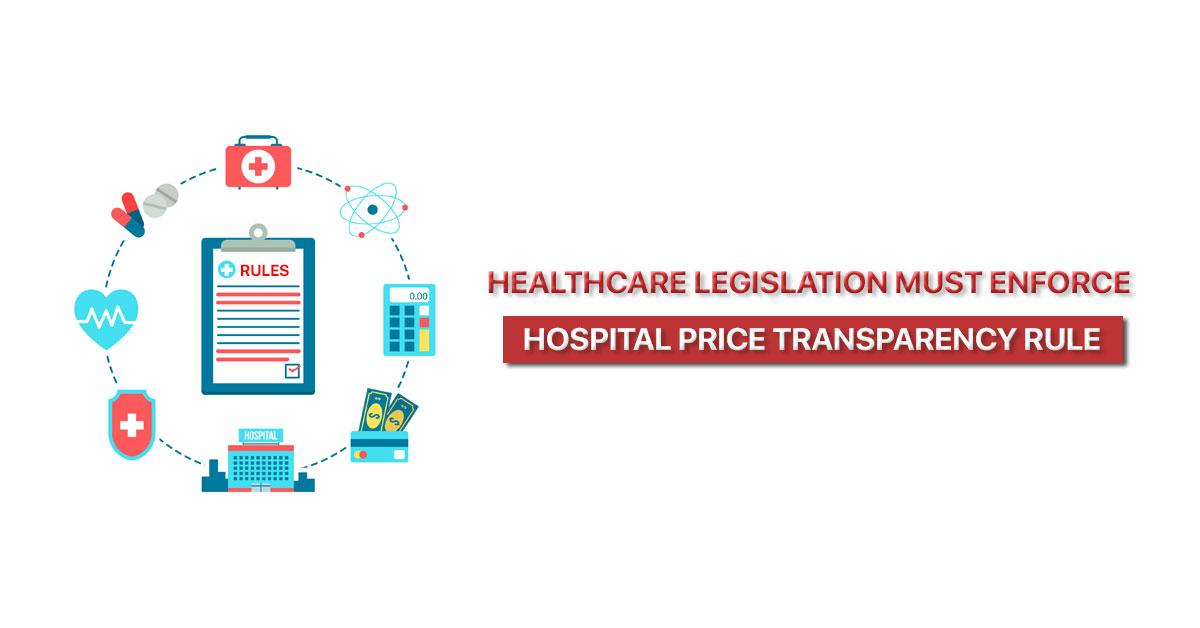Last week, during the onset of the summer recess, the House Ways and Means Committee introduced a healthcare reform bill. Regrettably, this legislation lacks the same potential impact as the competing bill presented by the House Energy and Commerce Committee, known as the Patient Act.
What are the shortcomings of this new bill? It falls short in incorporating comprehensive measures for price transparency that could result in significant savings for both individuals and employers. Notably absent are provisions that mandate hospitals to publicly disclose all their negotiated rates with health insurers, a requirement established by an existing hospital price transparency regulation, which the Patient Act reinforces and enhances.
The necessity for employers and patients to have access to the actual rates of health plans cannot be overstated. This information is pivotal in enabling employers to identify substantial and unjustified price disparities for identical medical services, make comparisons with other plans, and prevent instances of overcharging.
To counter this glaring and highly erratic hospital pricing, the plan engaged in negotiations with in-state hospitals to establish reimbursement rates that were only slightly higher than the Medicare rates. This strategic move resulted in a transformation from an anticipated $9 million deficit to a surplus of $112 million in just three years, effectively safeguarding the plan from insolvency without resorting to transferring costs or reducing benefits.
Likewise, Chris, who was previously in charge of New Jersey’s extensive public sector health plan serving 800,000 lives, encountered significant variations in health claims prices. These disparities triggered ongoing inquiries into the practices of some of the state’s largest healthcare providers.
When all health plan prices are made publicly available, the potential for innovation and patient empowerment to reshape healthcare becomes comparable to how Expedia and Travelocity revolutionized the travel industry. The establishment of a healthcare price marketplace will naturally stimulate competition, applying additional downward pressure on costs. Employers will be equipped to guide their employees towards the most superior care options at the most favorable prices, subsequently sharing the resulting savings through reduced healthcare premiums and increased wages.
The significance of robust price transparency legislation is underscored by a recent study conducted by PatientRightsAdvocate.org. This study reveals that only 36% of hospitals are adhering fully to the prevailing hospital price transparency regulation.
In 2022, the largest hospital network in the country, Healthcare, generated $60.2 billion in revenue and accrued $5.6 billion in profits. When pricing information remains obscured, hospitals possess unrestricted opportunities to capitalize on excessive profits.
The escalation of healthcare expenses has reached alarming levels, resulting in 100 million Americans accumulating medical debt and causing nearly two-thirds of the population to hesitate seeking essential medical treatment. The swift increase in costs for employee healthcare coverage has directly contributed to stagnant worker wages and the dampening of business profits.
Within the current non-transparent state of affairs, both employers and labor unions have been compelled to take legal action against their health plan administrators in order to gain access to crucial pricing data that can lead to cost reduction. Through these actions, they have unveiled instances of excessive charges and practices that hinder fair competition, amounting to billions of dollars. Introducing transparency to the negotiated rates between hospitals and health insurers is imperative to cleanse these inflationary pricing strategies.
Congress has the ability to introduce a healthcare system that fosters competition and prioritizes patients by formalizing and enhancing the regulation on hospital price transparency. This involves the stipulation that hospitals must disclose all rates associated with health plans. The Patient Act achieves this goal, while the alternative proposal presented by the Ways and Means Committee falls short. The choice for employers and lawmakers regarding healthcare reform is unequivocal.

